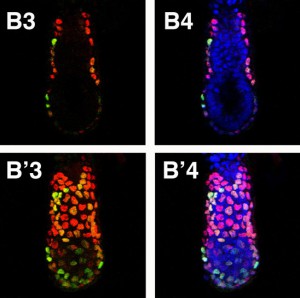Last month saw the annual joint Spring conference of the annual British Society of Cell Biology and British Society of Developmental Biology at the University of Warwick. BMC Cell Biology and BMC Developmental Biology were lucky enough to attend.
As is often the case, although a national conference it attracted a diverse range of speakers and delegates from across Europe and beyond, while still maintaining the friendly atmosphere of a small conference.
As a joint conference both subjects were split equally, leading to a diverse range of talks. These including the excellent plenary talks Kai Simons on raft structures within cell membranes and from Janet Rossant, talking about the contribution of the trophectoderm layer of mouse blastocyst to the developing mouse embryo.
Dr Rossant’s talk in particular fell on a recurring theme of several talks throughout the conference of the importance of cell fate mapping methods to understand tissue development and other processes.
A highlight was the Waddington Medal winner’s talk by Phil Ingham. In an entertaining and warmly received description of his career to date, he stressed an issue that will resonate with many scientists: the importance of basic research for later applications. In this case it was how work on Drosophila developmental biology ultimately lead to disease therapies decades after it was started.
The conference ended with an audience-pleasing final session covering live cell imaging. All six speakers amply demonstrated how imaging could illuminate but also dissect complex and surprising cellular and developmental processes. Neatly recapitulating the subject of Janet Rossant’s opening plenary talk, the stunning 3-dimensional reconstructions of the patterns of morphogenesis in mouse embryos shown in the talk by Kat Hadjantonakis brought the conference to a fitting close.

Comments